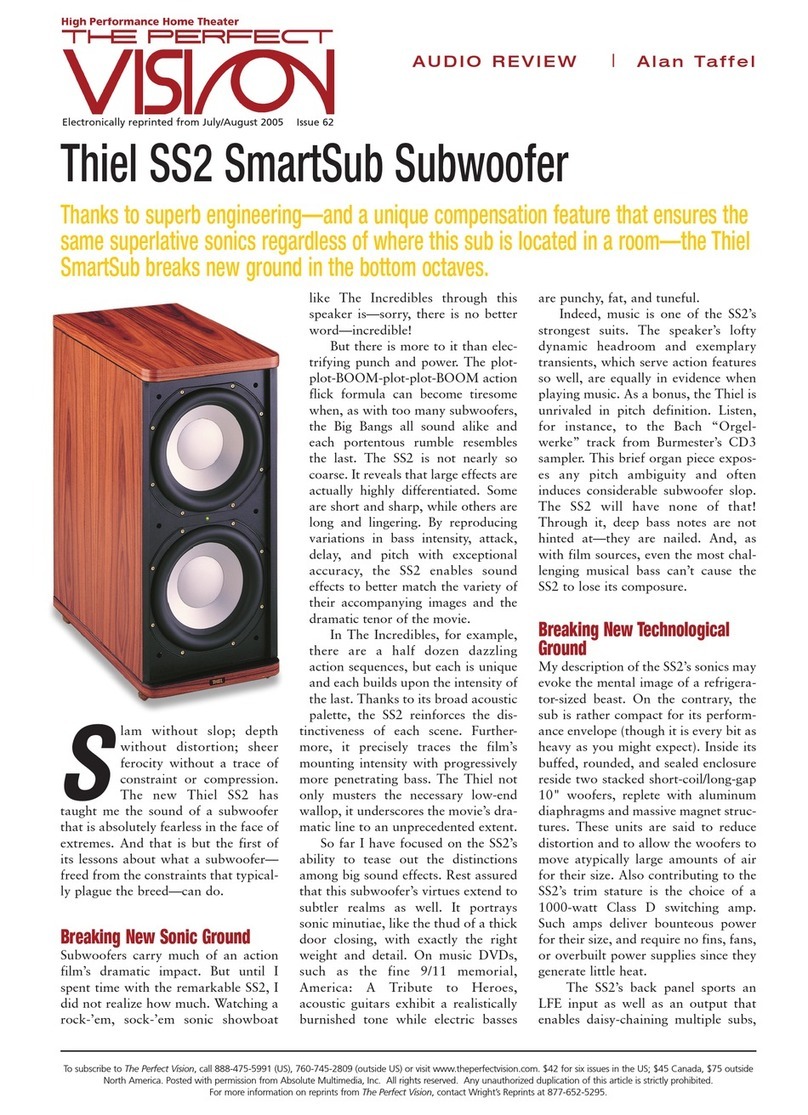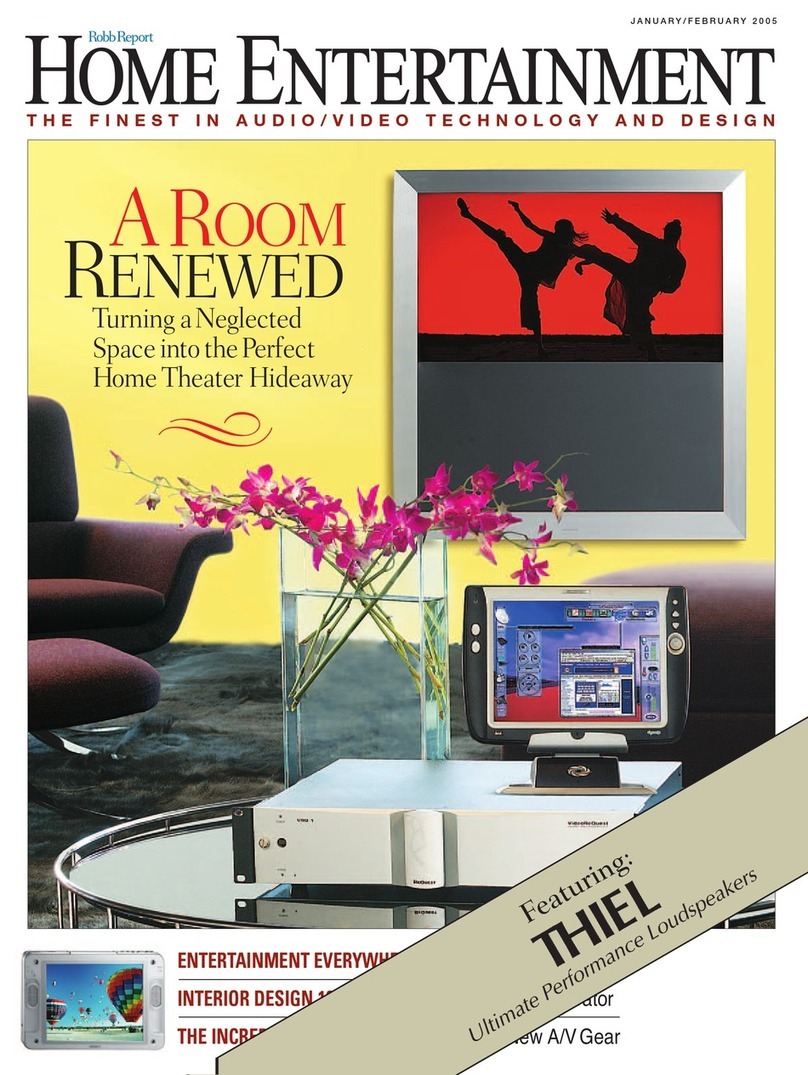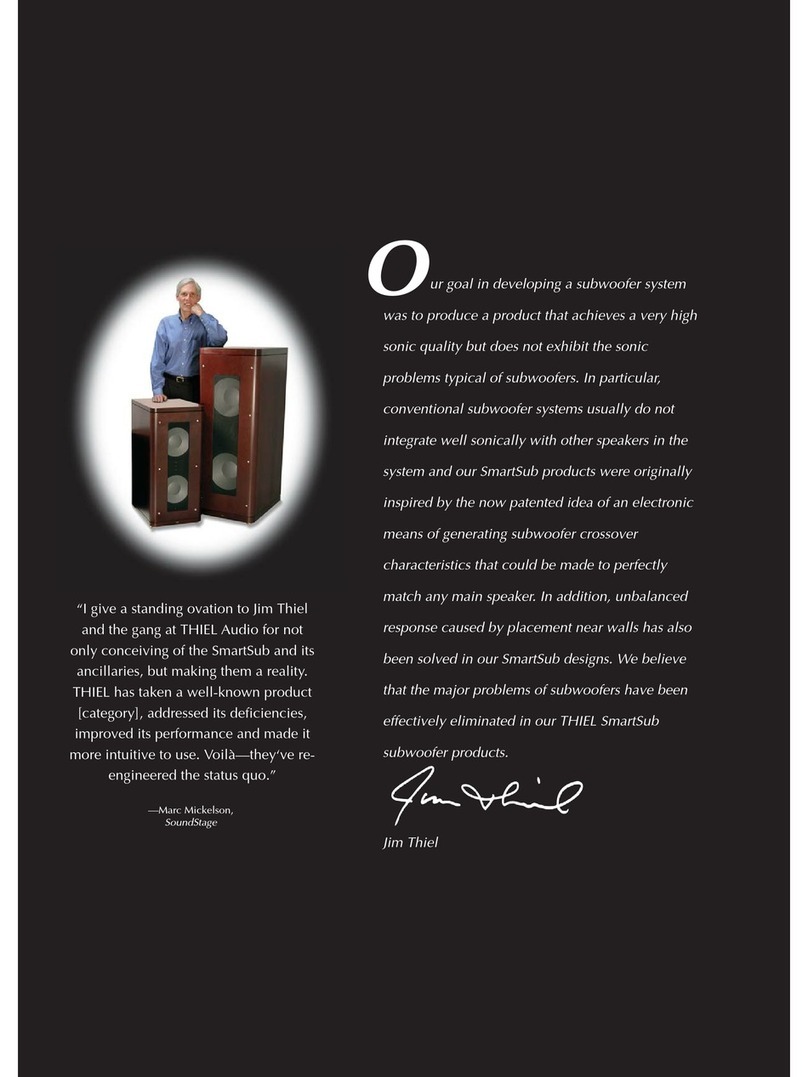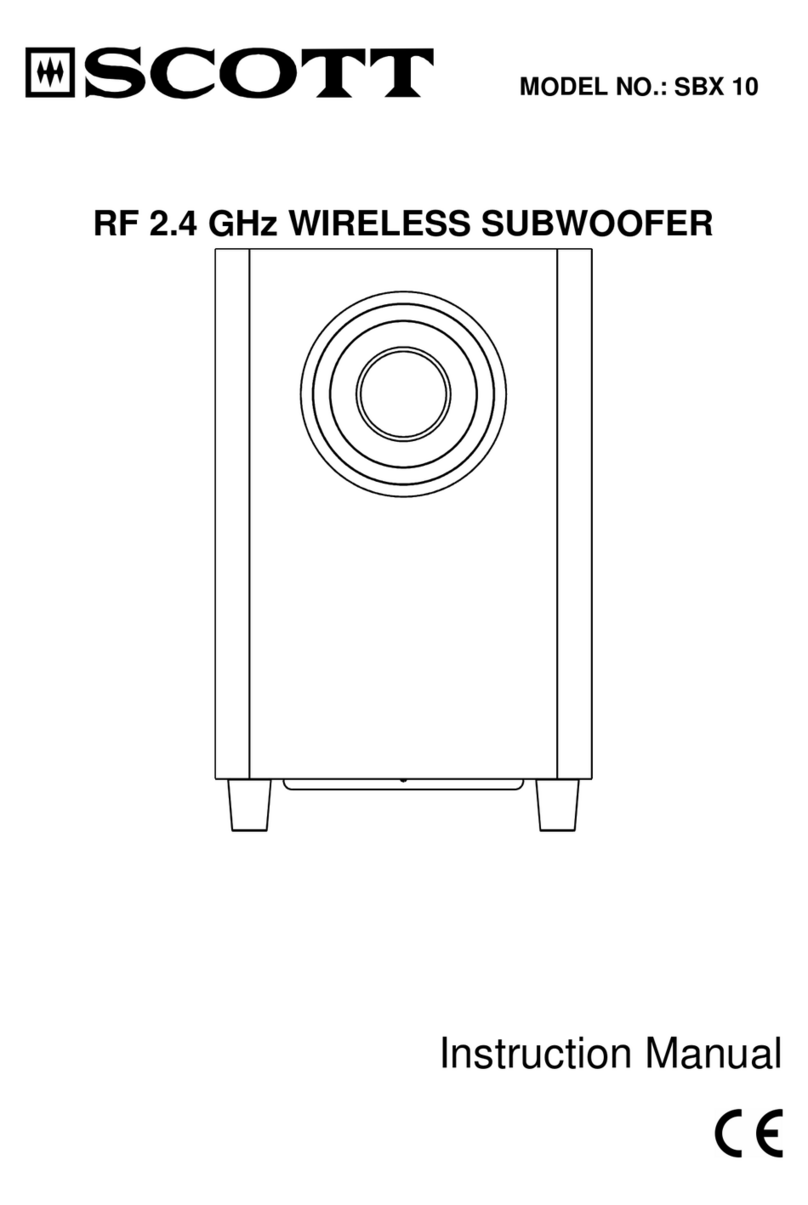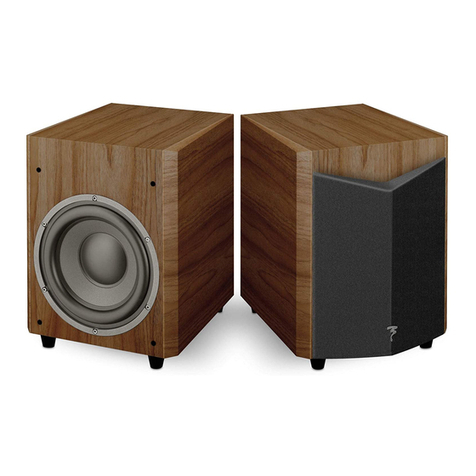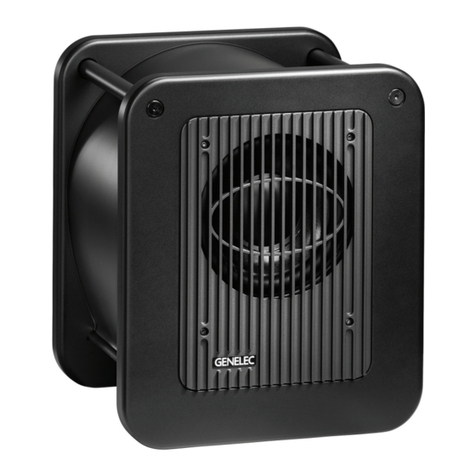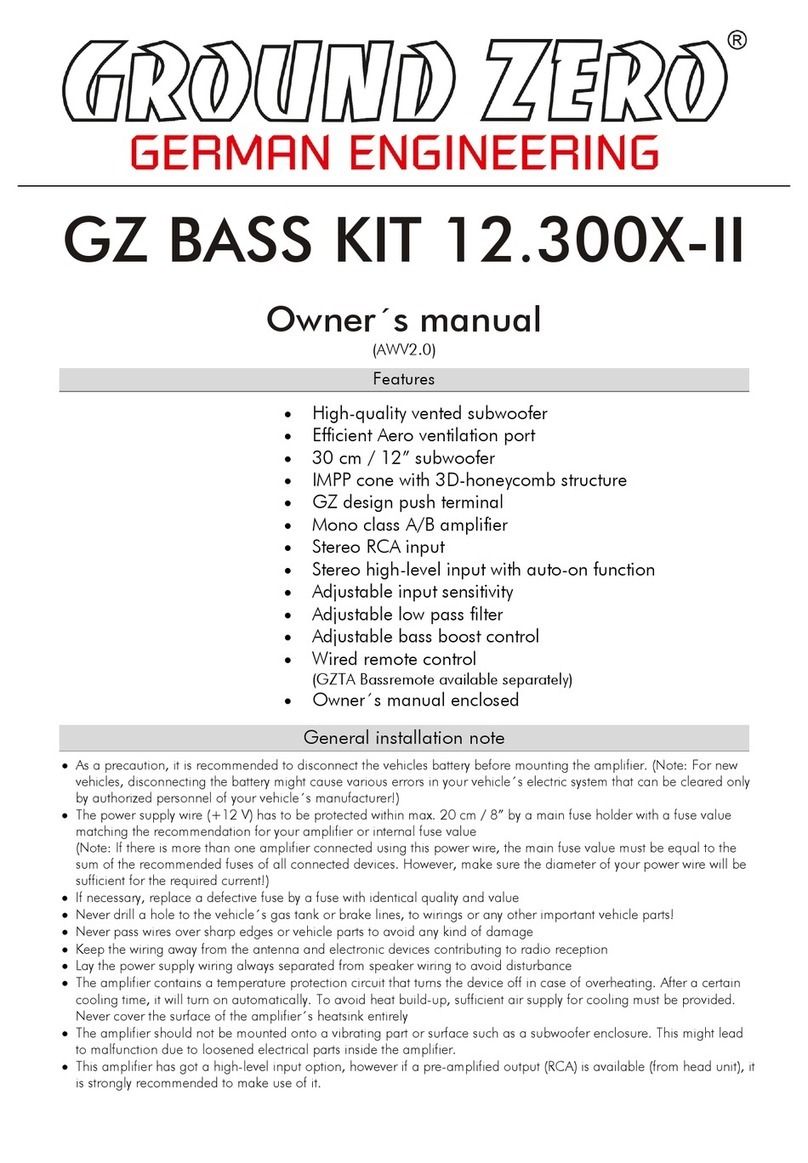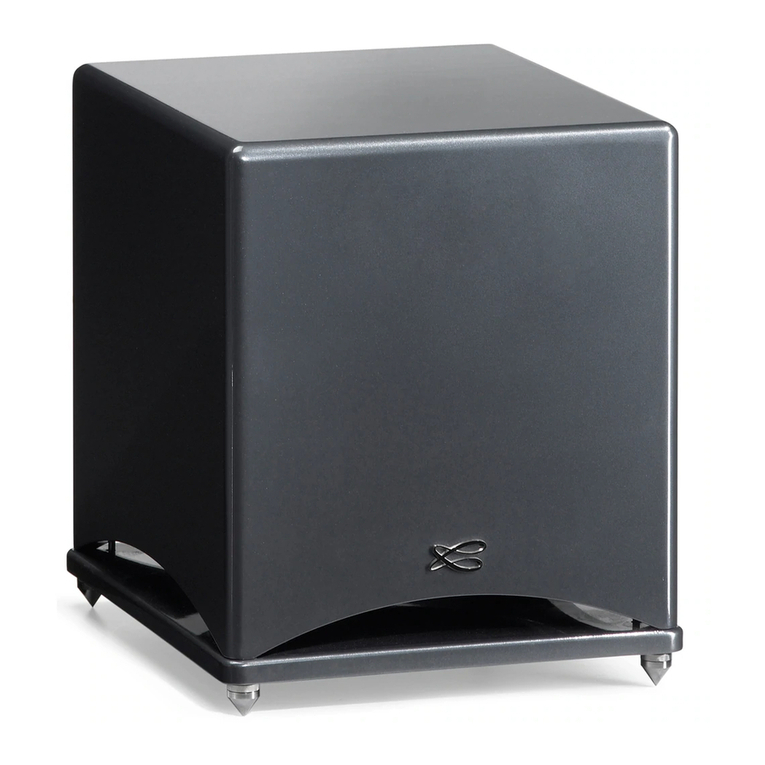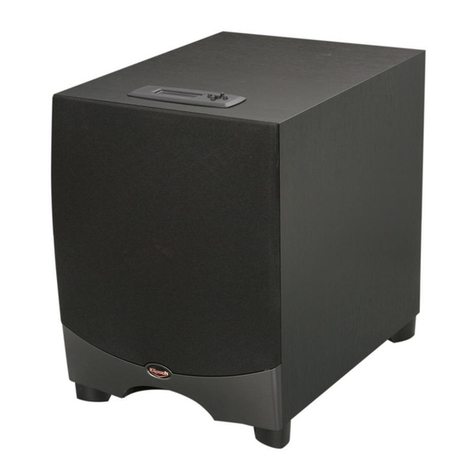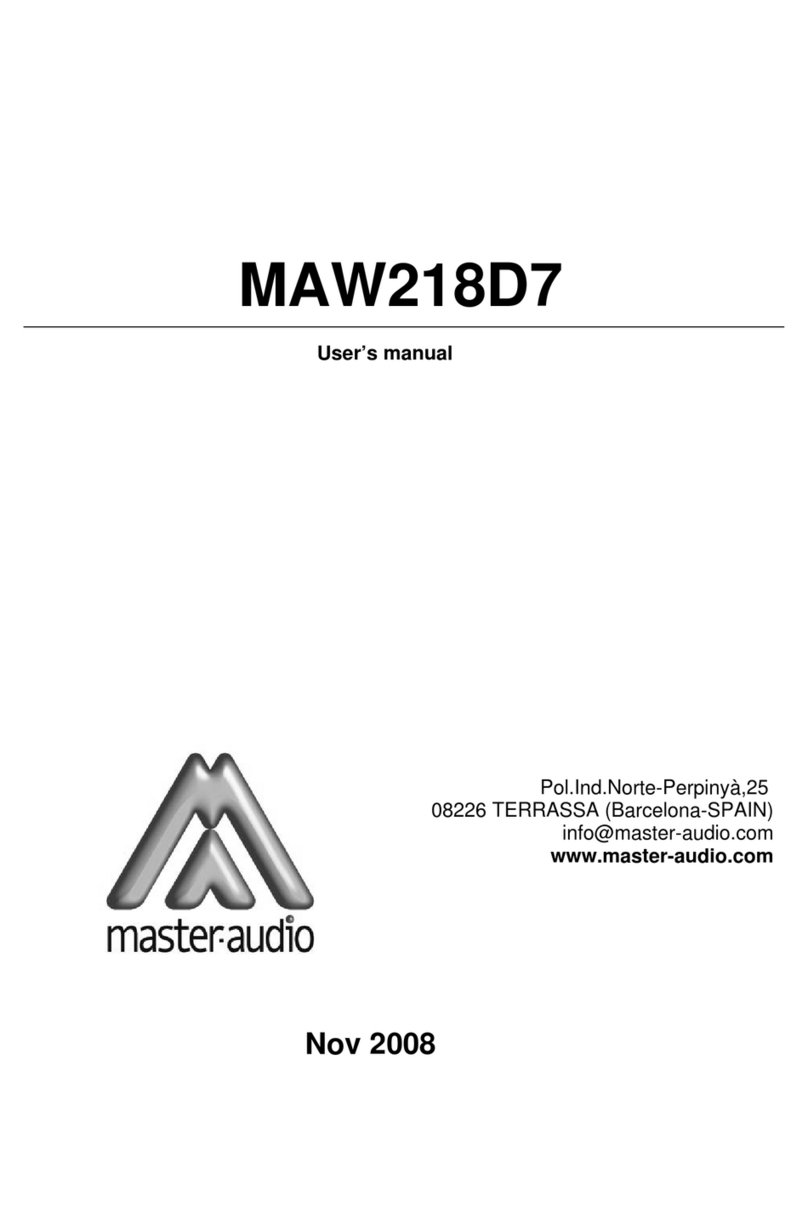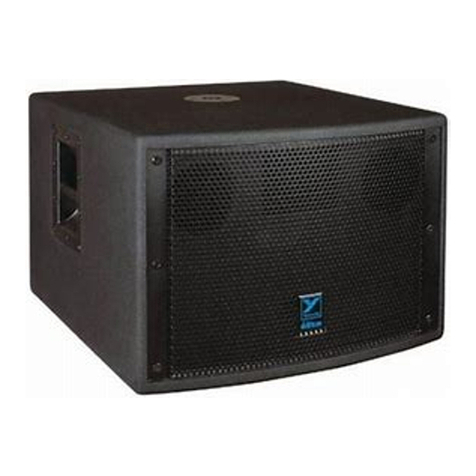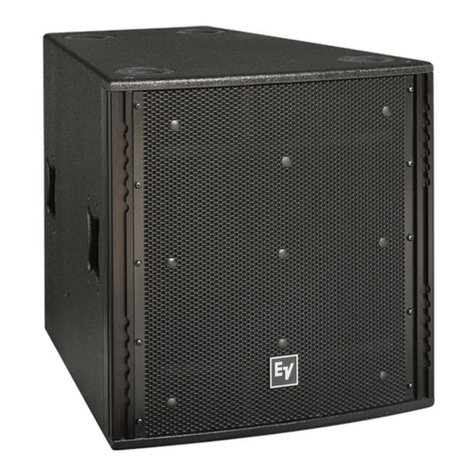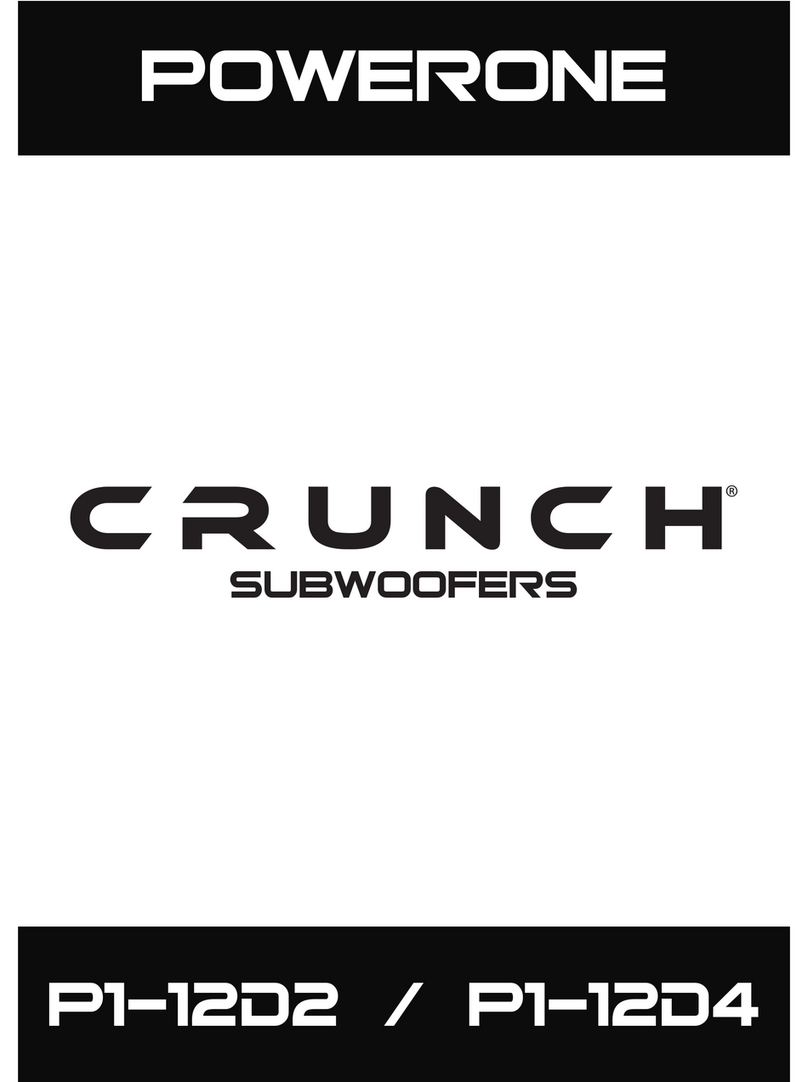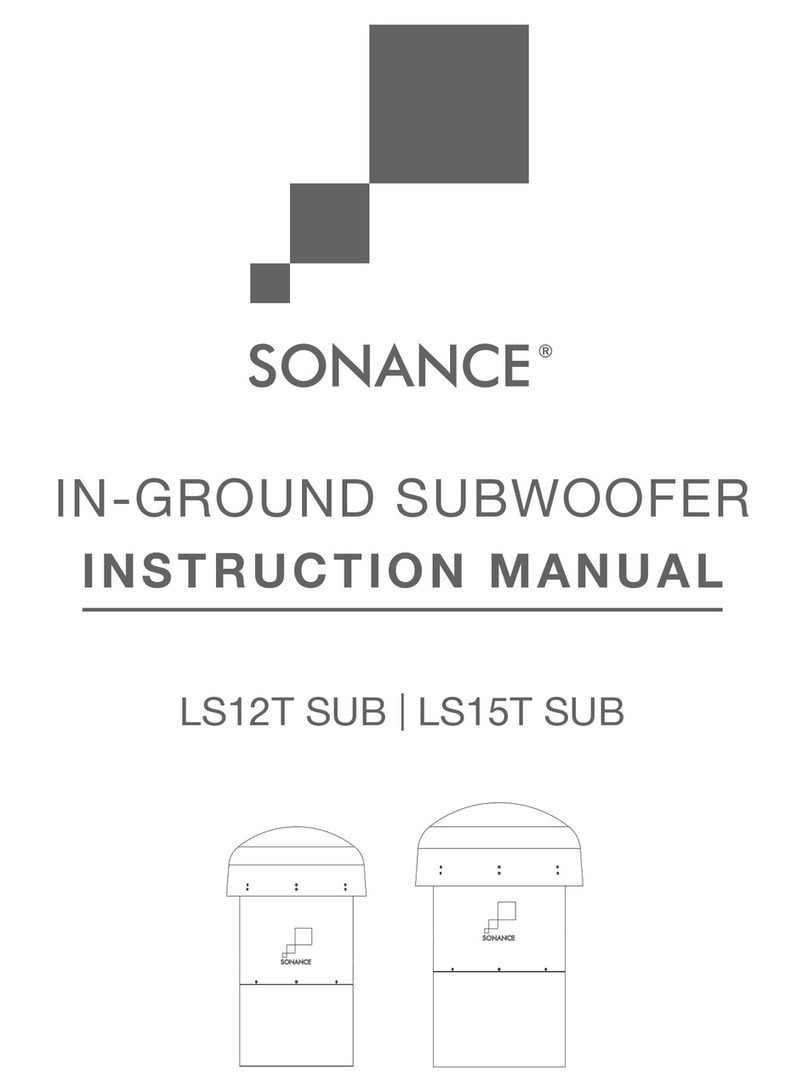Thiel SI 1 Dimensions

Subwoofers have become standard equipment in home-theater
systems. The boom and crash of big-budget movies require
additional bass output (I'm not sure why explosions have to be
felt as well as heard, but such is the way of the A/V world), and
home-theater receivers and processors have built-in functionality
specifically for subwoofers. Very rarely is a home-theater system
sold without a subwoofer, and very rarely does a speaker
company not have a subwoofer—or three—in its product lineup.
Bass, it appears, is a growth sector of the audio industry.
However, subwoofers are still considered add-ons for music-
only stereo systems, perhaps because so little music requires
subterranean low-frequency reinforcement, more likely because
we audiophiles are so picky that we won't accept poorly
integrated bass. We still try to extend the response of our
speakers downward, often with mixed results. For every audiophile
who thinks highly of the bass he gets with his subwoofer there
is another—or three —whose results are decidedly unmusical.
The reason for this is simple: setting up a subwoofer is a job for
someone with expertise. The control panels of many subs look
as daunting to consumers as the control panel of an airplane to
someone visiting the cockpit for the first time. And in both cases,
pushing buttons and turning knobs haphazardly only leads to
poor results—or worse.
With all of this as background, Thiel Audio decided to rethink
the subwoofer. The outcome of literally years of work is the
company's line of SmartSub subwoofers, passive crossovers, and
the innovative SI 1 Integrator, the first such products from Thiel.
All aim at simplifying the process of integrating a subwoofer
www.soundstage.com
P r o d u c t R e v i e w
Review Summary
Sound
"What most defines [the SmartSub system's] performance is the
inability to discern the subwoofer's position—localization effects
are nonexistent." "Tremendous low-frequency power and extension,
but also...exacting finesse and bloom. There was more bass
and better bass." "One thing the SmartSub did that other very
good subwoofers also accomplish is spreading the soundstage
laterally and imbuing it with a more physical presence."
Features
"The SmartSub lineup comprises four subwoofers that range in
price from $2900 to $8900 USD," all of which "can be connected
at the line or speaker level." "But this is where the similarities
to traditional subwoofers end. Gone from the SmartSubs are
the standard adjustments for phase, crossover slopes, output
and the like. These are replaced with a few adjustments on
the SmartSub itself, and either a passive crossover for use with
various models of Thiel loudspeakers or the SI 1 Integrator, which
tailors up to 16 (!) SmartSubs for mono or stereo use in home-
theater and audio-only systems and with any main speakers."
Use
When using the Integrator, the results you achieve are only as
good as the data you enter, and if the maker of your main
loudspeakers, for instance, pads sensitivity and bass-extension
figures, you will end up with less-than-perfect results."
Value
"The SmartSub SS2 and SI 1 Integrator are expensive," but "on
grounds of setup or performance…[they] are beyond reasonable
criticism."
Thiel Audio
SmartSub SS2 Subwoofer
and SI 1 Integrator
by Marc Mickelson
November 2004
Thiel has
"re-engineered the status quo."

into an A/V or stereo system and addressing a number of
performance issues.
Smarter bass
It's an understatement to say that Thiel Audio offers a line of
subwoofers. In fact, a substantial portion of Thiel's current product
line is devoted to providing deep bass. The SmartSub lineup
comprises four subwoofers that range in price from $2900 to
$8900 USD, with the SS2 reviewed here coming in at $4900.
All SmartSubs are powered and can be used at the line or
speaker level. But this is where the similarities to traditional
subwoofers end. Gone from the SmartSubs are the standard
adjustments for phase, crossover slopes, output and the like.
These are replaced with a few adjustments on the SmartSub
itself, and either a passive crossover for use with various models
of Thiel loudspeakers or the SI 1 Integrator, which tailors up
to 16 (!) SmartSubs for mono or stereo use in home-theater
and audio-only systems and with any main speakers.
With its SmartSub lineup, Thiel decided to address the deficiencies
of traditional subwoofers, not only in terms of use but also
performance. Configuring a subwoofer optimally has always
been a challenge. So much of the fine-tuning that has to be done
is unintuitive, and this leads most often to bass that's overly
prominent. In conceiving its first-ever subwoofer offerings, Thiel
decided to redesign the interface between the subwoofer and
its owner, and came up with a truly user-friendly alternative.
Instead of flipping switches and turning dials to effect a change
in the subwoofer's performance (and oftentimes make matters
worse), with a Thiel SmartSub and Integrator, you enter data
that is used to adjust the subwoofer's output and thereby
match it optimally to your main speakers. And if you own Thiel
speakers, you can forego the Integrator in favor of a matching
stereo or multichannel passive crossover. This saves you money
and makes for an even less-involved setup regime.
In assessing the performance of existing subwoofers, Thiel
identified a number of specific problems that they felt required
attention. These include problems with output, distortion and
uniformity; problems with sonic integration with the main
speakers; and problems with room interaction. To address
sheer output capability, Thiel designed a series of special drivers.
These aluminum-cone woofers boast very high excursion —
1 1/4" peak to peak—and engineering that takes full advantage
of this range of movement without introducing other issues.
To move the air that such drivers are capable of propelling,
the dual-driver SmartSub SS2, SS3 and SS4 have internal
1000-watt switch-mode amplifiers that offer high efficiency and
low heat. The differences among these models is in the size
of the drivers and cabinet, and therefore the output capabilities.
The electronics remain the same. The single-driver SS1 uses a
similar 500-watt amp.
Bass distortion and uniformity problems are addressed in the
design of the drivers and the SmartSub's electronics. The
drivers use Thiel's short-coil/long-gap motor system, which is
said to result in distortion that's one-tenth that produced by
conventional drivers, along with a copper pole sleeve and ring,
which stabilize the driver's magnetic-field strength and thereby
further reduce distortion. Uniformity refers to the ability, or
inability, of a subwoofer to deliver deep bass as the voice coils
of the drivers heat up, which can increase resistance by 70%
and lower output by up to 4.5dB. To solve this, each SmartSub
measures the temperature of the drivers' voice coils and
adjusts the gain and frequency response of the internal amplifier
to ensure that there is no compression or imbalance while
the drivers are being stressed.
Sonic integration and room interaction have always been issues
with subwoofers. If the problem with a subwoofer is not the
inability to blend it with the main speakers, it is the deleterious
interaction with the room, or both. To address integration, Thiel
created the SI 1 Integrator, which takes speculation out of
setting up a subwoofer for use with main speakers that will
be sealed or ported and whose low-frequency extension may
be great or not. There is also the variable of the main amplifier
used, its voltage gain, which affects the output of the entire
system at a given volume setting. Room interaction is addressed
inside each SmartSub, where measurements to walls are
entered, adjusting and correcting output accordingly. One thing
I wondered right off was if furniture, especially large main
speakers, might affect this data. "No," was Jim Thiel's response.
"Bass wavelengths are so long that furniture is not an issue."
If this discussion of design considerations seems cursory, it is.
However, for those of you who want more insight, Thiel has
created a well-written ten-page white paper that covers all of the
SmartSub's and Integrator's innovations. It is very good reading.
Like all Thiel loudspeakers, the SmartSub SS2 is beautifully
made, with furniture-grade touches. If you need to match a
SmartSub to your existing speakers or décor, Thiel can do it,
either by matching veneer or replicating just about any finish.
The SS2 is a solid mass, 11"W x 23 1/2"H x 20"D and 108
pounds, whose rear-mounted handles make it a heavy, but
feasible, one-person lift. The cabinet is constructed completely
of 1" MDF. Thiel loudspeakers often use multiple layers of MDF
for their baffles, but, according to Jim Thiel, because of the
width of the basket of the SmartSub drivers, baffle strength is
not an issue with the SmartSubs, whose baffles are 1" thick.
Also, there is no worry of bass energy exciting the baffle and
mucking up the midrange or treble. All inputs and controls are
on the rear, with the only front-mounted feature being an LED
that, when lit, indicates that the SS2 is on. You can turn this
indicator off if it bothers you, a thoughtful touch.
The $4400 SI 1 Integrator shows the same attention to detail
as the SS2. You can enter data either from the included remote
control or via the front-panel buttons, while various LEDs and
the center-mounted readout let you know the values. You can
P r o d u c t R e v i e w
2
www.soundstage.com

also store up to six groups of options, presumably for using
the same subwoofer in multiple configurations with multiple
speakers. The rear panel is packed with RCA and XLR inputs
and outputs along with a set of five-way binding posts for
speaker-level connection. The unit measures 17"W x 2"H x 9"D
and weighs 4 pounds.
I also want to point out that the manuals that come with the
SS2 and Integrator are comprehensive and very useful. They
don't go into too much detail (Thiel saves its white paper for
that), but they do give you all of the information you'll need
to connect and configure the products. Thiel took its time
bringing the SmartSub lineup to market, and it shows. The SS2
and Integrator have the earmarks of mature products even
though they are new.
Configuration and use
Testing a subwoofer system of the sophistication and claimed
broad applicability of the SS2/SI 1 Integrator is not quick, easy
work. Therefore, I used both products with four very different
pairs of loudspeakers. Floorstanders included Thiel's own CS2.4
(which I also used with a Thiel passive crossover specifically for
the CS2.4; see comments below), Paradigm Signature S8 and
Wilson Audio MAXX 2. The one minimonitor I had on hand was
Merlin's TSM-M, which sat on 24" Osiris Audionics Osiris sand-
filled speaker stands. Amplifiers were Lamm M1.2 Reference
and ML2.1 SET monoblocks. Preamps were a Lamm L2
Reference, Classé Audio CP-500 and Mark Levinson No.32
Reference. Digital source components were an Esoteric DV-50
universal player, Audio Research CD3 Mk II CD player, and a
Zanden Model 5000 Mk III DAC fed by either a Mark Levinson
No.37 transport or the Audio Research CD player. Interconnects
and speaker cables were from AudioQuest (Air and Volcano),
Analysis Plus (Solo Crystal Oval and Solo Crystal Oval 8) or Cardas
(Golden Reference), with either an Audience Au24 or i2digital
X-60 BNC-terminated digital cable connecting the Zanden DAC
and its transport. Power cords were from Shunyata Research—
Anaconda Vx, Anaconda Alpha, Taipan, Diamondback and
Python—as was power conditioning, via the mighty Hydra
Model-8, which was plugged into a Shunyata Silver Venon
AC outlet.
The first step to setting up any Thiel SmartSub is situating it in
the room. I used the SS2 in the left-hand corner of my 20' x 29'
listening room and between both stereo speakers, although
offset slightly to the left or right to test for directionality issues.
While other subwoofers have problems with room boundaries,
and especially corners, to various degrees, the SmartSub is
configurable in order to alleviate boundary aberrations. Once
you've figured out where you want to place your SmartSub,
you measure from the walls nearest to the side and rear of
the subwoofer and enter the distances into the SmartSub
itself. This is done in fractions of a meter, so you'll need to
convert measurements in inches and feet.
Next, you need to figure out how you will use the SmartSub,
which is determined by your system and main speakers. Any
of the SmartSubs can be used simultaneously in a home-
theater/stereo system. The main speakers, however, determine
whether you'll use the SmartSub with the SI 1 Integrator or one
of Thiel's model-specific passive crossovers. If you have only
Thiel speakers, you should opt for either a PX02 stereo ($350)
or PX05 multichannel ($500) crossover, which make setup a
breeze and mate seamlessly with the SmartSub. I tested this with
a pair of CS2.4 speakers, and the results were very impressive,
extending the low-end reach of the CS2.4s and making the
speakers and sub sound as one—and as one of Thiel's larger
speaker systems. The Integrator will work with Thiel speakers,
of course, and does afford greater adjustment flexibility. Jim
Thiel admitted that in some installations with Thiel speakers the
Integrator may be a better choice than the passive crossover. I
found the two to offer no sonic advantage over each other, but
your wavelengths may vary.
If you've purchased the Integrator, you will connect it to your
system and enter the data that will mate the SmartSub to your
main speakers. This involves, first, determining in which mode
you'll use the Integrator. As a rule of thumb, if your main speakers
are floorstanders that have nearly full-range sound, you will
use augment mode. If you have minimonitors or floorstanding
speakers with limited bass and output capabilities, you'll use
crossover mode. After determining this, you connect the
Integrator to your preamp/processor or amplifier and the
SmartSub. At a minimum, you will need an additional pair of
stereo interconnects for connection to your preamp or processor
and a single interconnect that will reach the SmartSub. You may
need extra speaker cables as well.
Most of the data that you will enter into the Integrator doesn't
invite or require experimentation, but some of it, like the voltage
gain of your amps and sensitivity of your main speakers, must
be gleaned from the manuals of those products or perhaps a
phone call to the manufacturer. Entering data is a snap—four
buttons on the Integrator's remote control or front panel allow
you to move among the various parameters and increase or
decrease their values. However, as you can probably guess,
the results you achieve are only as good as the data you enter,
and if the maker of your main loudspeakers, for instance, pads
sensitivity and bass-extension figures, you will end up with
less-than-perfect results. If this is the case, check our speaker-
measurements archive, www.speakermeasurements.com, to
see if we've measured your speaker. You can get accurate
data there.
There are three parameters that you will need to enter into
the Integrator that may require a little extra understanding than
the others: Low Frequency Extension, Low Frequency Level
and Crossover Frequency. These three adjust exactly what
their titles suggest, and they can greatly affect the outcome of
your setup, either negatively or positively.
www.soundstage.com
P r o d u c t R e v i e w
3

P r o d u c t R e v i e w
4
www.soundstage.com
Low Frequency Extension determines how extended the bass
response will ultimately be. The lower the better, right?
Theoretically, yes. However, at some point, you may tax the
SmartSub beyond its capabilities, especially with material that
has a great deal of low-frequency energy. The idea, therefore,
is to find the point at which the SmartSub can keep up with
the signal fed to it and deliver bass that's as low and powerful
as possible. I settled around 32Hz in my large room. For long-
term use, I would be a candidate for either a larger SmartSub
or another SS2.
Low Frequency Level controls how much bass boost or cut (up
to 6dB) will be produced by the main speakers and/or SmartSub.
I tried this setting at every level, and in every instance preferred
0—no boost or cut. In most instances, this is where you
should keep this setting, but it can be used to add or subtract
bass as your main speakers and room may require. Err on the
side of being conservative, although experimentation with the
remote control is easy.
Finally, Crossover Frequency, which is available only when you
use the SmartSub and Integrator in crossover mode, is perhaps
the most critical of the three. I asked Jim Thiel about it, and
his suggestion was a setting 10Hz higher than the -3dB point
of the main speakers (another value you have to enter into
the Integrator). Instead of going into the theory behind this
parameter, of which there is a great deal, I will just say that
Jim Thiel's recommendation will likely work very well, but you
can also tune this by ear with the remote.
As I mentioned, I used the SmartSub and Integrator with very
different speakers, testing the system in both crossover and
augment modes. With the Thiel CS2.4s, Paradigm S8s and
Merlin TSM-Ms, the blend with the subwoofer was perfect.
However, with the Wilson Audio MAXX 2s, the SS2 just couldn't
provide enough bass below the big MAXX 2s in augment
mode, and didn't provide the same low-frequency detail and
bloom of the MAXX 2's woofers in crossover mode. This didn't
surprise me. The only reason anyone would add a subwoofer to
the MAXX 2s, which have 10" and 13" woofers and a quoted
-3dB point of 21Hz, is to re-create the very lowest organ notes
at realistic levels, in which case more than one SmartSub is
required. The MAXX 2s have wonderful bass, and trying to
blend them with just about any subwoofer, even one as
advanced as the SS2, is mostly an academic exercise. Thus, the
listening comments that follow are based on the use of the SS2
and Integrator or passive crossover with the other speakers
I've mentioned.
SmartSubwoofing
Once the SmartSub system is sited, set up, adjusted and integrated,
what most defines its performance is the inability to discern
the subwoofer's position—localization effects are nonexistent.
Many (most) subwoofers can augment bass to a noticeable
degree, but few can do so while achieving sonic invisibility. So
often reviewers will ask the rhetorical question "Where is the
subwoofer?" when they encounter speakers with very good
bass performance. With the SmartSub system, that question
becomes, "Where are the large floorstanding speakers?," so
thoroughly does the SmartSub blend and disappear.
Naturally, I pulled out some favorite recordings that have
noteworthy bass: Harry Connick's She [Columbia CK 64376],
Walter Becker's 11 Tracks of Whack [Giant 24579-2], Suzanne
Vega's Nine Objects of Desire [A&M Records 31454] and Holly
Cole's Temptation [Metro Blue 7243 8 31653 2 2]. All were
rendered with tremendous low-frequency power and extension,
but also with exacting finesse and bloom. There was more bass
and better bass—exactly what we want from a subwoofer. The
opening of "Joe Slam and the Spaceship" from She gives
woofers and subwoofers seizures, but the SmartSub didn't rattle
or bottom out. My listening room is rather lossy and on a
concrete slab, but the SmartSub still caused the doors and
windows to chatter.
But what I kept coming back to was the way the SmartSub
disappeared. Even when a track's bass energy was squarely in
one channel, as with the bass guitar on "Virtue" from Ani
DiFranco's Up Up Up Up Up Up [Righteous Babe RBR013-D],
the SmartSub never shifted or otherwise changed the image,
except to extend the low frequencies of the bass guitar. When
the SS2 was set up in the far left corner, the bass guitar in the
right speaker did not drift. This suggested to me that Thiel is
onto something significant with its work on room boundaries
in the setup and configuration of the SmartSub.
One thing the SmartSub did that other very good subwoofers
also accomplish is spreading the soundstage laterally and
imbuing it with a more physical presence. The soundstage
sounded bigger and more three-dimensional due to this
"ambient bass." Cowboy Junkies' Whites Off Earth Now [RCA
2380-2-R] is a live recording made with a single microphone,
and with the SmartSub system in use, the performers sounded
bigger and more sculpted, the entire presentation seemingly
swelling in all directions. This is one of the uncelebrated benefits
of a very good subwoofer, and one of its defining characteristics
as well. Subwoofers aren't just about bass; they can enhance
the presentation in other ways, which is what the SmartSub
system did.
And so it went with recording after recording. As the SmartSub
was called on to increase the weight and reach of the low
frequencies, it did so. Yes, I could muck up the sound by
changing the values entered into the Integrator, increasing
the Low Frequency Level especially, but when used properly,
the SmartSub system did exactly what it was engineered
to do. The SmartSub SS2 and SI 1 Integrator are expensive,
$9300 together, but if you have Thiel speakers, you can save
a chunk of money by going with one of the passive crossovers,
and for strict LFE use you don't even need this. On grounds of

P r o d u c t R e v i e w
5
www.soundstage.com
setup or performance, however, the SmartSub and Integrator
are beyond reasonable criticism.
Recollections of the WATCH Dog
I have some good news, some bad news, and more good
news. The good news is that I have heard and reviewed a
subwoofer that is a direct competitor to the larger SmartSub
models, Wilson Audio's WATCH Dog, which has been
superseded by the WATCH Dog Series 2 ($10,950), a subwoofer
that's identical performance-wise to its predecessor. The bad
news is that I heard the WATCH Dog in a different room, with
different speakers, over two years ago. Back to the good
news—I used the WATCH Dog for almost a full year, so I
remember it well, and I have an entire review of my impressions
to fall back on. You've been briefed.
Setting up the WATCH Dog is much easier than setting up the
SmartSub. That's because your Wilson Audio dealer will deliver
and set up the WATCH Dog for you, and you'll have to do the
work with the SmartSub. However, it should be apparent that
the SmartSub is far easier for an end user to place and
configure. The WATCH Dog retains the standard adjustments
of most subwoofers and adds a built-in equalizer for taming
trouble regions. While I had the WATCH Dog, I was able to
achieve good results with Wilson Audio's Sophia loudspeakers,
but the WATT/Puppy 7s gave me fits that John Giolas of Wilson
Audio had to straighten out with his greater know-how and
handheld RTA. The WATCH Dog is also very large and weighs
283 pounds, which cuts down on placement options and
thereby makes set up trickier. With the SmartSub, you can
follow Ron Popeil's sage advice almost to the letter: "Set it,
connect it, configure it, and forget it."
Performance is where these two super-heavyweight bass
systems start to converge—and deviate again. As I noted in my
review, the WATCH Dog can pressurize room to a degree that
very few subwoofers or speakers can. The SmartSub SS2, with
Integrator or passive crossover, didn't accomplish this to the
same degree (in a much larger room), but it did produce
gut-wrenching low frequencies (if a wrenching gut is your
thing) and never gave away its position. I don't recall that the
WATCH Dog exactly telegraphed where it was in my listening
room, but it didn't seem to achieve the utter invisibility of the
SmartSub SS2. The WATCH Dog had slightly greater transient
impact, a quicker thrust on big bass-drum whacks and the like,
but the SmartSub system was no slouch. I also think the WATCH
Dog was a little better at broadcasting ambient bass and
thereby expanding the soundstage.
Which of these super subwoofers would I choose? If I owned
any speakers except those from Wilson Audio, I would pick
the SmartSub system because of its user-friendly interface and
extraordinary performance. I also think I could re-create the
WATCH Dog's feat of pressurizing the room and spreading the
soundstage by adding a second SmartSub SS2 or moving up
to the SS3 or SS4. In either case, I could still use the Integrator
or passive crossover—extra SmartSubs daisy-chain to each
other. However, it makes sense to choose the WATCH Dog for
use with Wilson Audio speakers. It mates well with even the
big MAXX 2s and models above, and there's much to be said
for matching exactly the finish of the subwoofer to that of the
main speakers.
Out with the old
I know of no easier way to add great low bass than Thiel's
SmartSub lineup, whose user friendliness is matched by the
sheer performance of these forward-thinking products. The
brainpower and effort behind the SmartSub lineup would be
for naught if the products didn't deliver on the implied promise
of easier and better. They do—subwoofer and controller/
crossover are easy and nearly foolproof to use, and the results
are deep, powerful, non-directional bass that gives the aural
illusion that your speakers have sprouted a new woofer—
or three.
Of course, the SmartSub lineup is aimed at home theater as
well, and I have no doubt that the SS2 and its brethren will
be just as impressive with movies. I'm a snob—music is tougher
to get right than explosions, so it stands to reason that explosions
should be impressively portrayed as well.
I give a standing ovation to Jim Thiel and the gang at Thiel Audio
for not only conceiving of the SmartSub and its ancillaries,
but making them a reality. Thiel has taken a well-known
product, addressed its deficiencies, improved its performance
and made it more intuitive to use. Voilà—they've re-engineered
the status quo.
...Marc Mickelson

P r o d u c t R e v i e w
6
© Schneider Publishing Inc. • Box 20068 • 390 Rideau Street • Ottawa • ON • K1N 9N5 • Canada
Company Info
Thiel Audio SmartSub SS2 Subwoofer and
SI 1 Integrator Crossover/Controller
Prices: SmartSub SS2, $4900 USD; SI 1 Integrator, $4400.
Warranty: Ten years parts and labor.
Thiel Audio Products
1026 Nandino Boulevard
Lexington, KY 40511
Phone: (859) 254-9427
Fax: (859) 254-0075
E-mail: [email protected]
Website: www.thielaudio.com
Other manuals for SI 1
1
Table of contents
Other Thiel Subwoofer manuals
